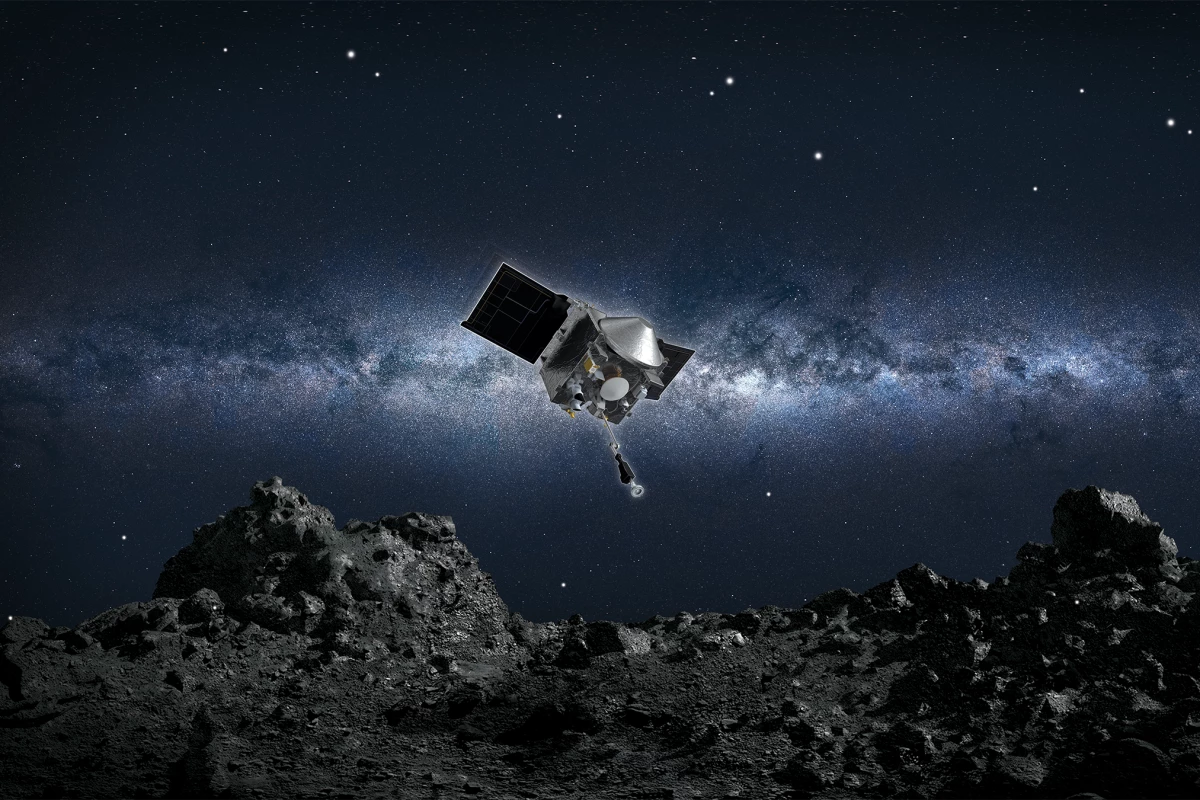In a truly remarkable feat of engineering, NASA’s OSIRIS-REx has scooped a sample of soil from the surface of asteroid Bennu, as it hurtles through space some 205 million miles from Earth. The spacecraft successfully touched the asteroid Bennu on Tuesday at 6:11 pm EDT and collected a 2-oz (57-g) sample of its surface.
Launched atop an Atlas/Centaur booster from Space Launch Complex 41 at Cape Canaveral Air Force Station in Florida on September 8, 2016 at 7:05 pm EDT, the robotic OSIRIS-REx probe spent four years matching orbits to rendezvous with Bennu before making a detailed survey of the body's surface to find a safe area of scientific interest.
Because Bennu is 205 million miles (330 million km) from Earth, it takes a radio signal 18 minutes to reach the spacecraft from mission control, so today's Touch-And-Go (TAG) maneuver was carried out under completely autonomous control by the onboard computer, relying on updated instructions from NASA engineers.
During the approach, the robotic arm called the Touch-And-Go Sample Acquisition Mechanism (TAGSAM) was deployed with its disk-shaped sample collection head forward and the solar panels angled back to avoid accidental contact with the asteroid. The spacecraft then slowly approached the 26-ft (8-m) diameter “Nightingale” landing site from its normal orbit altitude of 2,500 ft (770 m) using its Natural Feature Tracking system to make a safe approach and then pull back from Bennu before a collision could occur.
When the arm made contact with the asteroid surface for about 15 seconds, a blast of nitrogen gas dislodged a small, carbon-rich sample of pebbles and soil, which were collected by the sampler head and then stowed. If it turns out that insufficient material is recovered, the spacecraft will try again at a different area in January 2021. Otherwise, the current sample will be placed in a return capsule and in March 2021, OSIRIS-REx will depart from Bennu and begin its journey back to Earth.
The sample return capsule will separate from the mothership in September 2023, reenter the Earth's atmosphere to land at the Utah Test and Training Range for collection and be transferred to NASA’s Johnson Space Flight Center in Houston for storage and distribution to select research teams.
This is a first for NASA, but JAXA's Hayabusa robotic spacecraft successfully touched down on asteroid Itokawa in November 2005 and collected samples that were returned to Earth on 13 June 2010. The follow-up Hayabusa2 mission also landed on asteroid Ryugu and collected samples that are due to arrive back on Earth on December 6, 2020.
The animation below shows how the OSIRIS-REx sample collection procedure was performed.
Source: NASA





